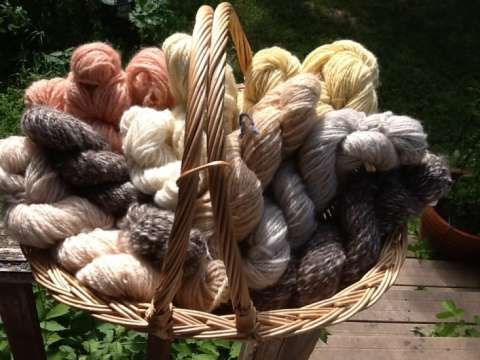Dying Wool With Motherwort

I cut one whole plant down. I cut it into small pieces and boiled it for several hours. I let it steep over night. I wanted to see what different assists would do to the color so I collected several samples if the dye while it was cooking. I added different things to each sample. Some of the things I tried adding were citric acid, vinegar, baking soda, and washing soda. None of these had any visible effect on the color. I am curious about copper, but don't have any on hand so that will be for next time.
They say the greens are surprisingly some of the hardest colors to get with natural dye. I have seen a beautiful green wool obtained from Mullein with a copper mordant. I have been looking for some of that, I know it grows around here. I then have to wait until my copper mordant (copper wire in vinegar and water) is ready to use.

Meanwhile, I am busy spinning up all the wool I have dyed from local plants. I do a spinning demonstration each year at the Rosholt Area Threshing Bee. It is the third weekend in August. It is a lot of fun for the whole family. I want to have some of the yarns I have dyed with the weeds the farmers are fighting in their fields. More information on the Threshing Bee is available at the RATA website Rosholt Threshing Bee.


